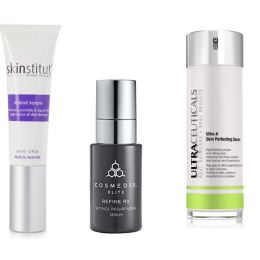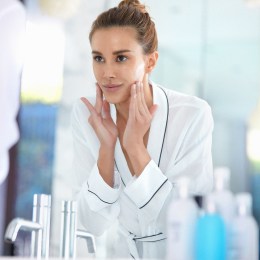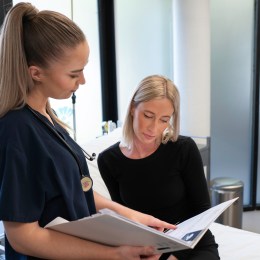You’ve probably heard the saying “cancer is a word not a sentence”. If you’re in the wellness or aesthetics business – whether as business owner/ manager, therapist or on the front desk – you might have shied away from offering cancer patients safe, caring treatment.
As many as one in three people will experience cancer in their lifetime. The aesthetics industry cannot afford to neglect the needs of this important but neglected demographic, to help them feel good and look better during one of the most arduous experiences they will ever face.
“Treating cancer patients shouldn’t just be about medical or surgical treatment,” says Dr Alex Phoon, Sydney plastic, reconstructive and cosmetic surgeon.
“It is about treating the whole person. Sometimes simple massage therapy and manual lymphatic massage can be complimentary to conventional treatments.
“But any treatment that helps the wellbeing of these patients as they transition through such a difficult stage of their life has real value. Even spending some time just listening to them can help.
“My colleague, Dr Pouria Moradi, and I devote a significant proportion of our practice, Park Clinic Plastic Surgery, to the microsurgical reconstruction of breast cancer patients. It is the greatest honour to have been given the opportunity to do this.
“I would suggest all therapists to reach out to these patients – you won’t be disappointed. You might just find it one of the most emotionally rewarding part of your day.”
There is a tidal wave of demand for oncology massage that grows by day. More and more of our population are starting to understand the benefits of complementary therapies, as both a preventative and an enhancement to wellbeing.
Aesthetics and massage therapists have a unique opportunity to contribute to their cancer clients’ quality of life and allow them to do something that is just for them.
But without appropriate training, therapists can subject themselves and their clients to unnecessary stress because both parties are worried if they are doing the right thing; whether a treatment might carry risks or create complications in a client’s cancer treatment or during their recovery.
For this reason, many businesses will either decline to provide certain services to clients with cancer – such as body massage, or facials involving massage – and may instead offer a “substitute” such as a manicure. Others ask for a doctor’s certificate before starting any beauty treatments.
This can create even more of a barrier between people with cancer and those who are healthy and thriving.
“While these practices are in the interests of promoting safety, it further highlights how much a client’s life has changed with their diagnosis; when all they want is a little pampering and to feel `normal’ again for a little while,” says Kylie Ochsenbein, general manager and a director of Oncology Massage Ltd (a registered charity and not for profit).
“People with cancer themselves are often cautious about doing anything that sits outside what their doctor or oncologist have told them.
“So they go without massage, beauty treatments and other complementary therapies because they are afraid.
“But therapists with oncology massage training can see people with cancer at any stage of their treatment and will be skilled at taking specific medical histories so that they know what they can and can’t do.
“By proudly stating that therapists in a clinic have been trained to understand cancer and the treatments, current patients or those with a history of cancer will trust that they are in the right place.”
The organisation offers Oncology Massage for Beauty Therapists training courses at regular intervals during the year.
The course teaches practitioners about the science of cancer, cancer treatments, appropriate products for cancer clients, and the importance of organic and safe massage techniques that trigger the relaxation response.
“Therapists who have had training in oncology massage also acquire the ability to adjust their massage to take into consideration the many side effects of cancer and its treatment,” says Kylie.
“Oncology massage is all about pressure, site and position. `Site’ is about knowing where on the body you can work safely: are there areas compromised by lymph node removal or other treatment?
“The reference to `position’ is to be sure the client is as comfortable as possible during the massage session, often using bolsters and pillows for support. It’s all about them!”
Kylie explains that oncology massage is a gentle pressure technique that triggers the relaxation response and creates a feeling of peace and tranquility for the client.
“With that comes a reduction in pain, anxiety, nausea, fatigue and depression and can be used with any clients who are in a fragile physical and emotional state,” she says. “Even your regular clients will benefit from the total relaxation that is oncology massage!
“Oncology massage-trained therapists know how to interface with the medical community and support clients through chemotherapy cycles in a drug-free way to reduce many of the side effects.”
There is an increased awareness around this which has driven the greater demand with organisations such as Breast Cancer Network of Australia (BCNA), Clinical Oncology Society of Australia (COSA) and the Cancer Council, now using Oncology Massage Ltd’s National Therapist Listing to help find suitably qualified therapists.
Matoyla Kollaras, director of Skin Factors, passionately believes in offering education to stockists of all Christina Cosmeceuticals and Ahava products in areas that exceed pure skincare, including such opportunities as working with cancer patients.
“It’s our firm view at Skin Factors that the more we talk and become educated about cancer within our industry, the more we can help others “If [clients] are frank with you about their illness, you must be wondering: `What do I know about cancer, its treatments and side effects? Are my skin care products and ingredients safe to use on those fighting cancer? How can I effectively provide customised spa/clinic treatments to those undergoing or recovering from cancer treatment?’.
“This in turn allows you, as salon, spa and clinic owners/therapists, to broaden your scope of practice and connection with clients.”
ONCOLOGYMASSAGETRAINING.COM. AU; PARKCLINICSYDNEY.COM; SKINFACTORS.COM.AU




